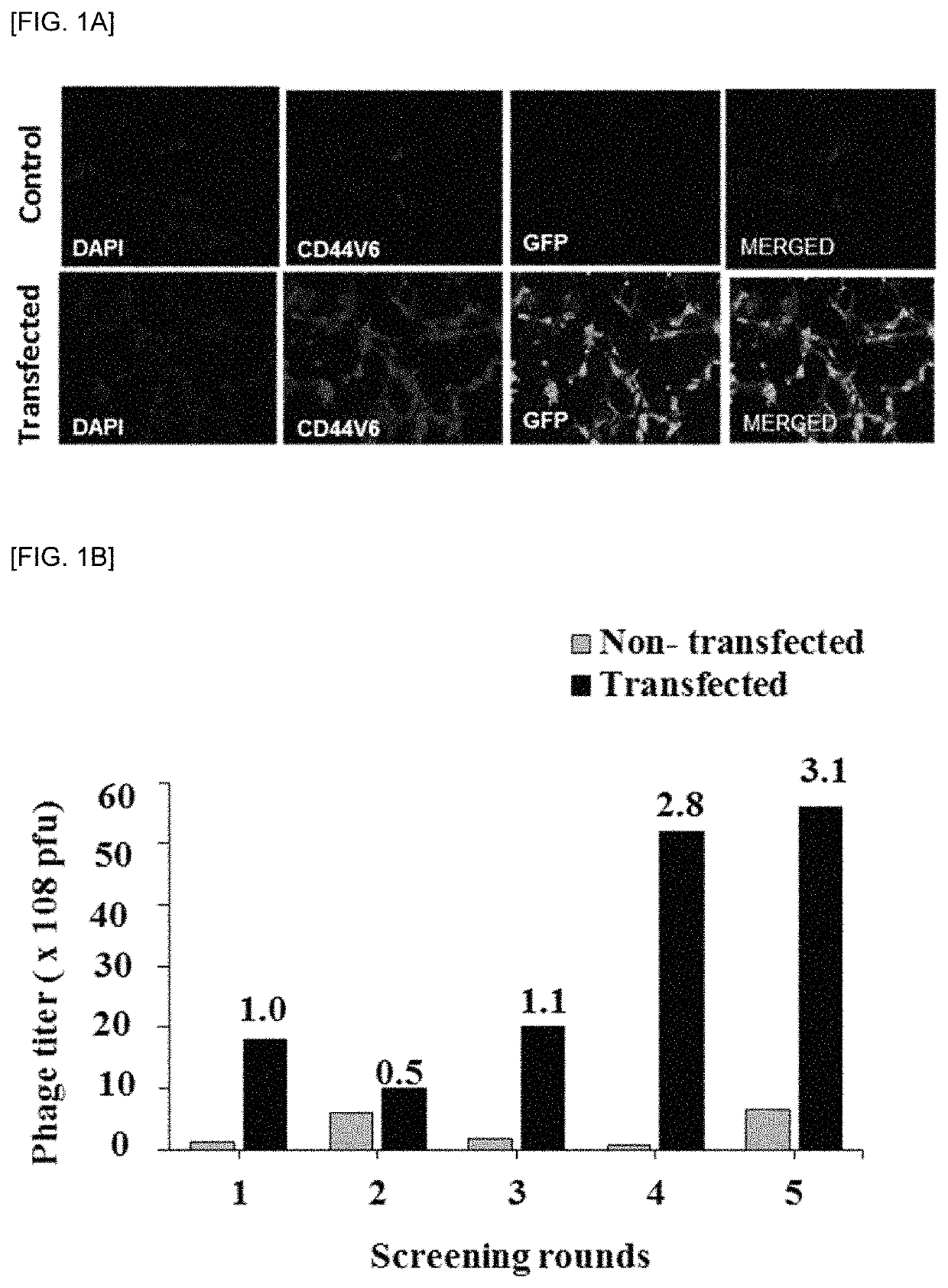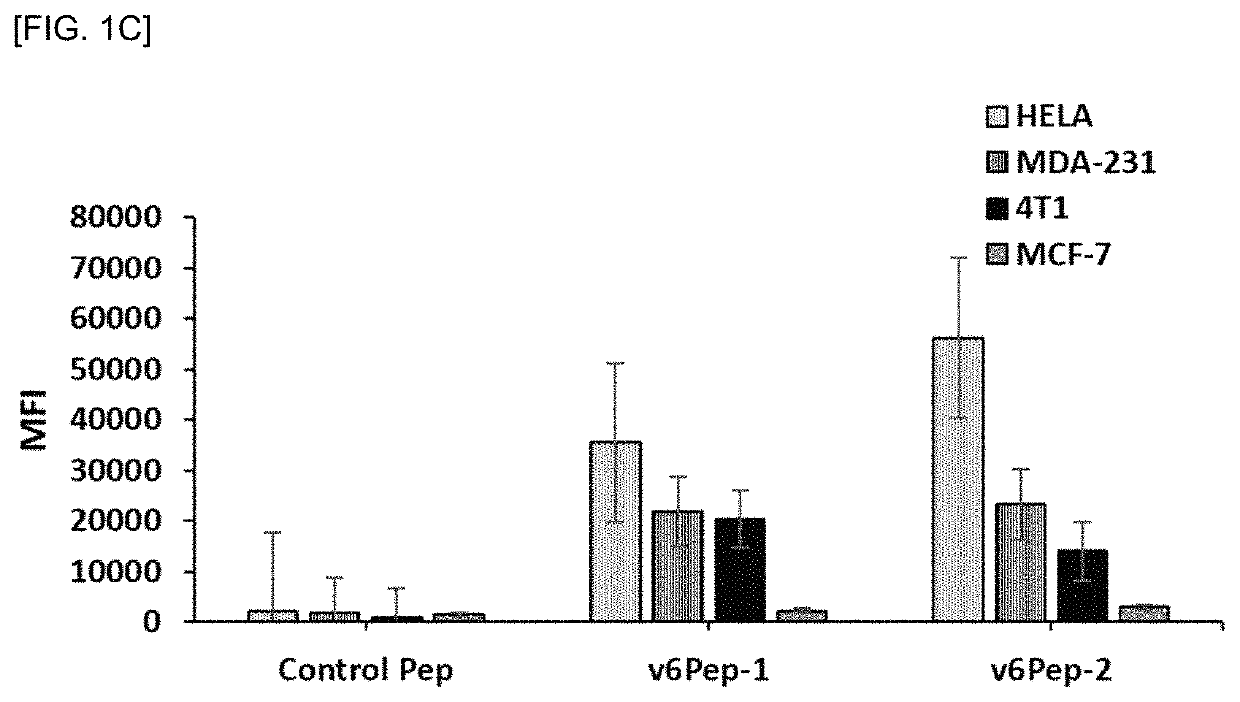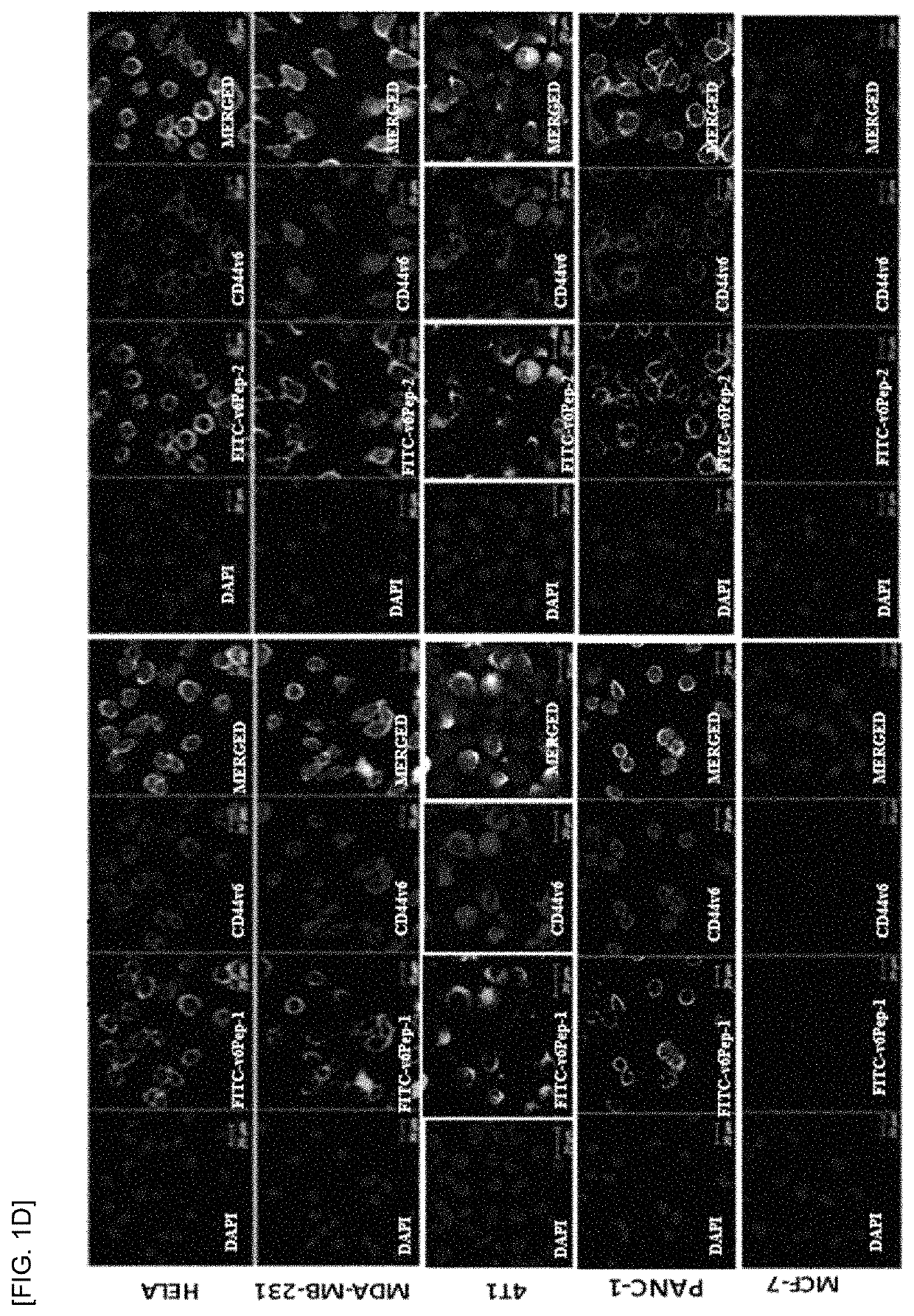Peptides for binding to CD44v6 and use thereof
a technology of peptides and cd44v6, which is applied in the direction of cd44, peptide/protein ingredients, instruments, etc., can solve the problems of poor prognosis and prone to pathological conditions, and achieve the effects of preventing cancer cell migration and metastasis, stable serum, and high potential as an anticancer treatment agen
- Summary
- Abstract
- Description
- Claims
- Application Information
AI Technical Summary
Benefits of technology
Problems solved by technology
Method used
Image
Examples
example 1
Selection of CD44v6-Binding Peptides Using Phage Display
[0102]To screen CD44v6-binding peptides, the present inventors first prepared HEK-293 cells transfected with CD44v6-GFP plasmid by transient transfection. HEK-293 transfected cells were stained with CD44 variant 6 antibody to see the colocalization of CD44v6-GFP plasmid (FIG. 1a). After confirmation by immunofluorescence, the transient transfection efficiency was checked with western blotting analysis in two different time intervals 24 h and 48 h, and the transfection was confirmed at each time point as compared to the non-transfected HEK-293 cells. In order to screen CD44v6 specific peptide by direct screening method, the present inventors confirmed that all phage clones in each round showed enrichment output titter, which were significantly increased as compare to non-transfected titter, phage enrich to 3.11×101 fold, respectively, at 5 rounds (FIG. 1b). Twenty phage clones were randomly picked from the third, fourth, and fif...
example 2
CD44v6-Specific Cellular Binding of v6Pep-1 and v6Pep-2
[0103]MDA-MB-231 cells were serum-starved for 24 hours and then subjected to further treatment. SiRNAs v6-1 and v6-2 transfected and kept it for different time interval to achieve the CD44v6 expression inhibition. To confirm the silencing of CD44v6 gene, whole cell extracts were fractionated by SDS-PAGE, and transferred and membrane was treated with 1 μg / ml of CD44v6 and CD44 antibody, incubated overnight at 4° C. After the confirmation of siRNA inhibition by western blot analysis, CD44v6 specific siRNA inhibition was clearly observed at 24 h, 48 h and 72 h, but not seen in wild type CD44 (FIG. 2a). To check the specific binding of peptides to silenced MDA-MB-231, cells were incubated with v6Pep-1, v6Pep-2 (FITC labelled) and the flow cytometry analysis was performed (FIG. 2b). As a result, both peptides showed low binding in MDA-MB-231 and value is calculated to show the mean fluorescence intensity (MFI) of peptides. After sile...
example 3
Inhibition of HGF-Induced Phosphorylation of c-Met and Erk by v6Pep-1 and v6Pep-2
[0105]CD44v6 isoform act as a coreceptor for c-Met in a variety of cancer cell lines and primary cells. The c-Met activation and signaling can be blocked by CD44v6 antibody and peptides. So the present inventors also tested the effect of CD44v6 peptides (v6Pep-1 and v6Pep-2) and a combination of both the peptide (v6Pep1+2) on the activation of c-Met to confirm whether these groups of peptide and combination inhibit or hinder the signaling between CD44v6 and c-Met. In the present invention, MDA-MB-231 and 4T1 cells were serum-starved (24 hours) and were induced with the growth factor HGF (25-50 ng / mL) at 37° C. for 10 min. The cells were treated with a CD44v6 specific peptide or a control peptide (100 ng / ml) at 37° C. for 10 min before induction. To detect activated Erk and activated c-Met, cells were lysed and subjected to Western blot analysis using antibodies against phosphorylated Erk and phosphoryla...
PUM
 Login to View More
Login to View More Abstract
Description
Claims
Application Information
 Login to View More
Login to View More - R&D
- Intellectual Property
- Life Sciences
- Materials
- Tech Scout
- Unparalleled Data Quality
- Higher Quality Content
- 60% Fewer Hallucinations
Browse by: Latest US Patents, China's latest patents, Technical Efficacy Thesaurus, Application Domain, Technology Topic, Popular Technical Reports.
© 2025 PatSnap. All rights reserved.Legal|Privacy policy|Modern Slavery Act Transparency Statement|Sitemap|About US| Contact US: help@patsnap.com



